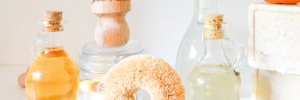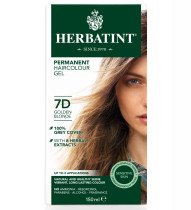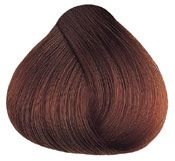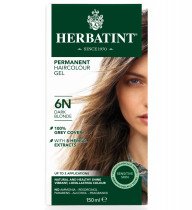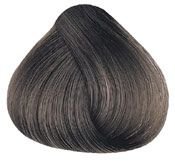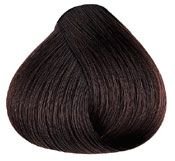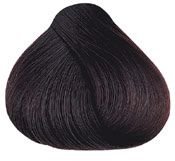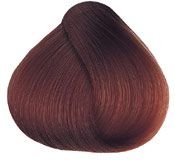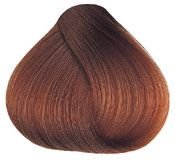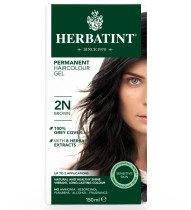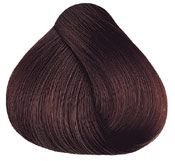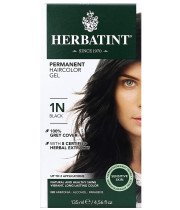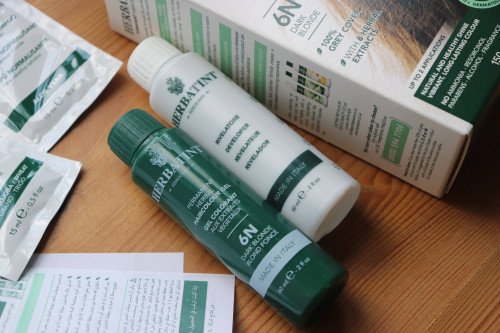
Shiny lush hair flows beautifully and shimmers with a shade of unearthly beauty - this is how “hair” is presented in advertisements for hair dyes. During such videos, the buyer is informed that dyeing hair is not only useful, but also good for self-affirmation. In our era of youth and beauty, hair is dyed not only to hide gray hair, but just like that - to “change the image” or to give an unusual shade.
However, all this advertising hype only masks the disturbing facts that link regular use of dye to various forms of cancer. In order to get luxurious shades of chestnut, copper, red or black, permanent dye must first chemically damage your hair. Under a microscope, the hair cuticle looks like fish scales. The pigment molecules to which the hair owes its color are stored under this scale in the central shaft. In order for the dye to penetrate the hair, you need to open the cuticle and allow the chemical to get to the natural pigment molecules. Permanent paints contain two components: a dye and a reagent. The dye usually consists of a whole range of synthetic dyes and so-called intermediaries: ammonia, diaminbenzenes, phenylenediamines, resorcinol and phenols.
When mixed with a reagent (usually hydrogen peroxide), the dye begins to oxidize until the desired color is obtained. Ammonia causes the hair to swell so that the cuticle scales separate and the dye penetrates inside.
Human and animal studies show that the body quickly absorbs carcinogens and other chemicals that are part of the permanent and semi-permanent dyes.
Dye problems were first noticed in the late 1970s, when several studies found a link between hair dye and breast cancer. One study reported that 87 out of 100 breast cancer patients had dyed their hair for many years.
A more recent Harvard study concluded that, compared with women who never dyed their hair, women who dye their hair 1 to 4 times a year have a 70% higher risk of developing ovarian cancer. Women who dye their hair 5 or more times a year are twice as likely to get ovarian cancer as women who don't dye their hair at all. In 2001, the February issue of the International Journal of Cancer found a link between long-term use of hair dye and an increase in bladder disease. At the same time, the risk is higher the longer you use the dye, as well as for women who dye their hair black, brown or red.
Hair dye components such as 4-chloro-m-phenylenediamine, 2,4-toluenediamine, 2-nitro-p-phenylenediamine, 4-amine-2-nitrophenol cause cancer in laboratory animals. Phenylediamines are strong irritants and cause severe allergic reactions, and they are also mutagens, that is, they cause DNA mutation and abnormal development of embryos in animals. Other irritants include hydrogen peroxide, ammonia, resorcinol, and 1-naphthol.
Now it is important for us as consumers not only to make sure that the gray hair is covered, the color is adequate and the duration of the effect, but also that the toxicity of the hair dye is low. A recent review of hair dyes published in the magazine "60 Millions de Consommateurs" (published by the French National Institute of Consumers) studied 18 hair dyes, among which were not only well-known brands (Schwarzkopf, Garnier, Palette, L'Oreal Paris), but also brands that position themselves as natural (Herbatint, Naturtint, Eugene Color). In compiling the rating, various aspects that are important for the buyer were taken into account: effectiveness (painting over gray hair), color duration, sensations during dyeing, label, toxicological properties, allergies. Herbatint (colour 4M) was chosen as number one - the paint covered gray hair, provided a long-lasting effect, gave an absolutely satisfactory color with a natural shade. The main reason for choosing this particular paint is the use of the least amount of components in the formulation that can increase sensitivity or become toxic. Therefore, the use of Herbatint paint minimizes the health risks associated with the use of permanent paint. However, like all permanent colors, Herbatint contains para-phenylenediamine, which increases allergies. Permanent paints that do not contain para-phenylenediamine are likely to contain an even more harmful component - toluene-2,5-diamine sulfate.
The following conclusions were made during the study:
- All 18 permanent products tested received positive color results, although the results were slightly lower for blonde color.
- The main problem is manufacturers using potentially toxic substances. Sometimes up to 15 disturbing ingredients are found in one product.
- Leading brands don't work as best practice examples. Despite good staining results, the rating drops rapidly in toxicological evaluation.
- Products without ammonia or with herbal ingredients are not always the products with the least risk.
Safety rules for hair coloring:
1. Unfortunately, there are no completely natural and safe permanent (resistant and covering gray hair) paints. Therefore, if you dye your hair, try to choose products that are less harmful than those commonly found on the market. Never buy products whose ingredients are unclear to you.
One of the safest paint brands is Herbatint. The specially selected formula contains a minimum amount of p-phenylenediamine and hydrogen peroxide. You will not find ammonia, fragrances, resorcinol, alcohol, parabens, and other ingredients that cause allergic reactions and irritation in Herbatint paints.
2. Do not dye your hair too often. Try to allow as much time as possible between paint applications.
3. Leave the paint on your head for the minimum amount of time allowed.
4. Semi-permanent paints are considered safer. They give a good shade, refresh the color between the use of permanent paint, are more gentle and easy to use. But there are also disadvantages: the color is washed out over time, the paints do not lighten and do not color the gray hair (although it depends on the nature of the hair, sometimes it covers). Look for a semi-permanent color without para-phenylenediamine (such as Vegetal Color).
5. If you have red or brown hair, think about henna, which has been used by women in India and Africa for thousands of years to semi-permanently color their skin and hair. Derived from the leaves of lavsonia, henna will give your hair a beautiful rich shade from bright cherry to golden chestnut, from coffee to mahogany. In addition, henna is good for hair - it conditions and restores. Buy quality henna without p-phenylenediamine. Black henna, which is also used for tattoos, usually contains p-phenylenediamine.
6. Stylists assure: some women suit gray hair! More and more models and public figures are taking a stand against hiding gray hair. True, the option not to paint over gray hair is more suitable for thick and thick hair.
7. Keep the natural color. It is likely that you will remain a pleasant exception among the standard, unnaturally red heads and dyed blondes that look alike. There are cases when women paint for a long time, trying themselves in the form of redheads, brunettes and blondes, and then switch to their natural color and are very satisfied.



